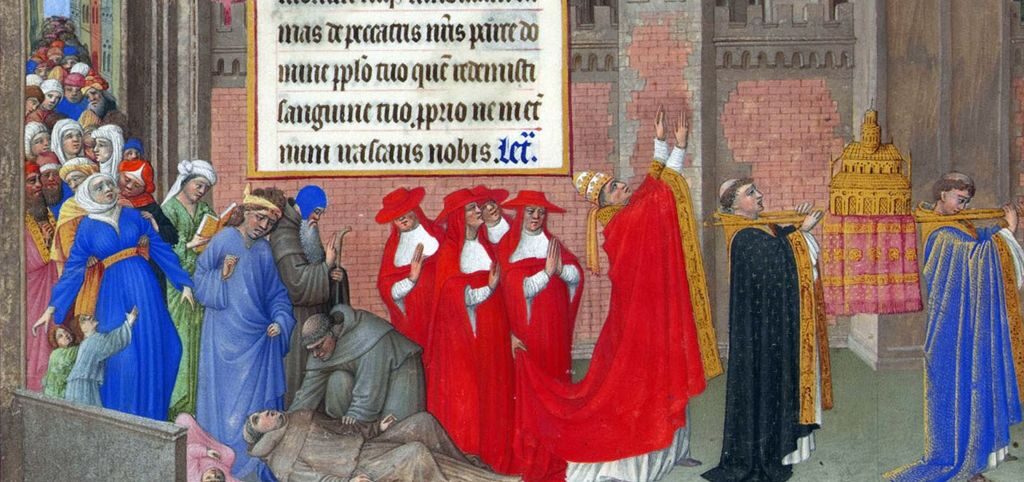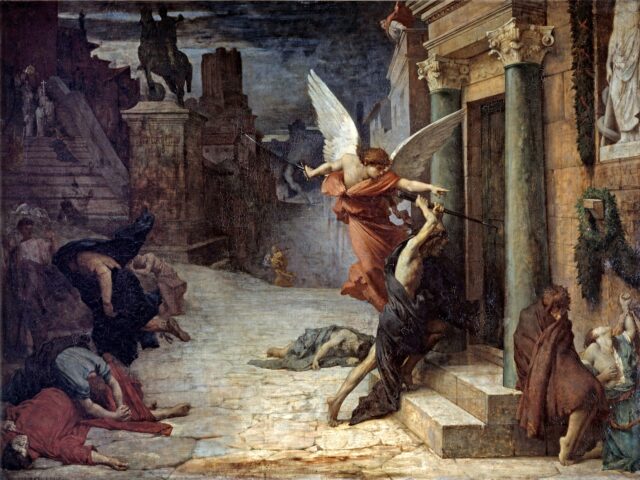ROME — Long before the industrial revolution and fossil fuels, “climate change” was wreaking havoc on the health of ancient Romans, Smithsonian magazine contends.
Citing a study published in the journal Science Advances, Smithsonian underscores a correlation between cold, dry periods in ancient Rome and “devastating bouts of fatal illness” between 200 BC and 600 AD.
Whereas Rome enjoyed stable weather from 200 to 100 BC, it later suffered “three very cold periods,” all of which “line up with documented plagues,” states Smithsonian writer Sarah Kuta.

The plague strikes Rome as portrayed by Marcantonio Raimondi, engraver (printmaker), 1512-1513, Italy. (Sepia Times/Universal Images Group via Getty)
The first cold spell, which struck the Roman Empire between 160 and 180 AD, corresponds almost perfectly to the period of the Antonine Plague (also called the Plague of Galen), which caused diarrhea, fever, and pustular eruptions of the skin and left an estimated 5-10 million dead, some 10 percent of the population of the empire.
The second cold period occurred between 245 and 274 AD and coincided with the Plague of Cyprian (250-266 AD), an outbreak costing an estimated 5,000 lives daily in the Roman Empire.
In his work On Mortality, St. Cyprian of Carthage (d. 258 AD) described the symptoms of the plague, encouraging Christians not to fear the disease since death is only a transition from the present world to everlasting life. Instead, Cyprian urged his fellow Christians to see the disease as an opportunity to live their faith fully.
The third cold phase hit just after 500 AD and corresponded with the Plague of Justinian, the first documented outbreak of bubonic plague.
This plague, named after the Byzantine emperor Justinian I, was the worst of the three and would eventually claim 50 million lives.
Curiously, all three of these ancient Roman plagues are believed to have originated in China and traveled to the West via the Silk Road.

UNSPECIFIED – CIRCA 1754: Pope Gregory I during the Great Plague in 589 when plague struck Rome. (Photo by Universal History Archive/Getty Images)
According to the study, the alignment of the three plagues with sharp temperature deviations suggests a probable correlation between the two phenomena.
The links between the cold periods and the pandemics were so obvious that “it was one of those times when, as a scientist, you go, ‘Wow,’” said the study’s lead author Karin Zonneveld, a micropaleontologist at Germany’s University of Bremen.
“The Roman Empire rises and falls and rises and falls,” said co-author Kyle Harper, a classicist at the University of Oklahoma.
“There’s a series of episodes of very extreme crises in some cases. And I think the case is now overwhelmingly clear that both climate change and pandemic disease had a role in many of those episodes,” he added.

COMMENTS
Please let us know if you're having issues with commenting.